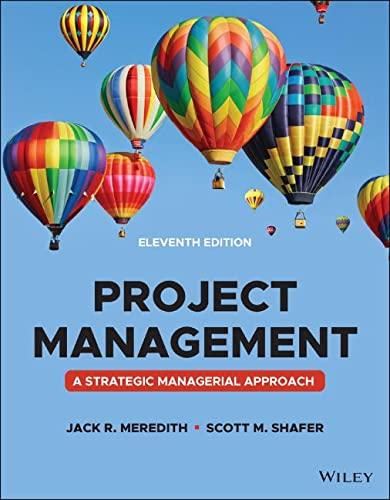Question
Compensation management is one of the key aspects of human resources management. Employee compensation includes salary, benefits, bonuses, and so forth which can be successfully
Compensation management is one of the key aspects of human resources management. Employee compensation includes salary, benefits, bonuses, and so forth which can be successfully used as a tool for improving organizational performance. The benefits of employee compensation include increased engagement and motivation, reduced turnover and increased productivity. However, organizations should put careful thought and consideration before using employee compensation as a motivator towards achieving organizational performance since they can also have adverse effects. For example, employee compensation programs such as pay for performance systems can adversely affect teamwork because it creates competition among team members and discourages them from working together. Further, it can also cause demotivation for underperformers which further hurts overall productivity.
Additionally, not all employees respond well to compensation programs within the public sector. Research conducted by Idemobi et al. (2011) on a typical public sector organization found that "financial compensation for staff members in the public service do not have a significant effect on their performance and that financial compensation received are not commensurate with staff efforts" (p. 109). Successful pay-for-performance plans should therefore have "clear and convincing objectives that will improve quality and help the organization operate more efficiently and economically" (U.S. Office of Personnel Management, n.d.). Additionally, rewards should match efforts for the program to be successful.
A real-world example of a federal organization that used an employee compensation program is the United States Postal Service (USPS). The organization adopted a pay for performance system that comprised two parts - The National Performance Assessment (NPA) and the Performance Evaluation System (PES). The program provided annual pay adjustments for non-bargaining unit employees such as Postal Career Executive Service (PCES) employees and the majority of Executive and Administrative Schedule (EAS) employees. (Office of the Inspector General, 2013). The United States Postal Service was able to set strategic goals and measure performance objectives throughout the organization via the program. According to the U.S. Office of Personnel Management, the program was successful in increasing productivity within the United States Postal Service. According to current data, the USPS is still using Pay for Performance Programs to reward employees based on the results of their fiscal year performance evaluation.
In conclusion, if done right and administered equitably, employee compensation can be an effective tool for improving organizational performance since it motivates employees to do better. However, employers must be cautious when establishing employee compensation programs since they can also hinder cooperation amongst employees, and collective problem-solving, which are necessary for sustained productivity and overall organizational success. Additionally, public organizations adopting employee compensation programs such as pay-for-performance should be cautious and not "underestimate the impact the program will have on the organization's culture and related systems such as recruitment, appraisal, and payroll" (U.S. Office of Personnel Management, n.d.).
References
Idemobi, E. I., Onyeizugbe, C. U., & Akpunonu, E. O. (2011). Compensation management as a tool for improving organizational performance in the public sectors: A study of the civil service of Anambra State of Nigeria.Sacha Journal of Policy and Strategic Studies, 1(1), 109-120.
Can employee compensation be used as a tool for improving organizational performance? Reflect critically. Refer to the readings and also provide concrete empirical examples from the public sector to supplement the responses.
Step by Step Solution
There are 3 Steps involved in it
Step: 1

Get Instant Access to Expert-Tailored Solutions
See step-by-step solutions with expert insights and AI powered tools for academic success
Step: 2

Step: 3

Ace Your Homework with AI
Get the answers you need in no time with our AI-driven, step-by-step assistance
Get Started


